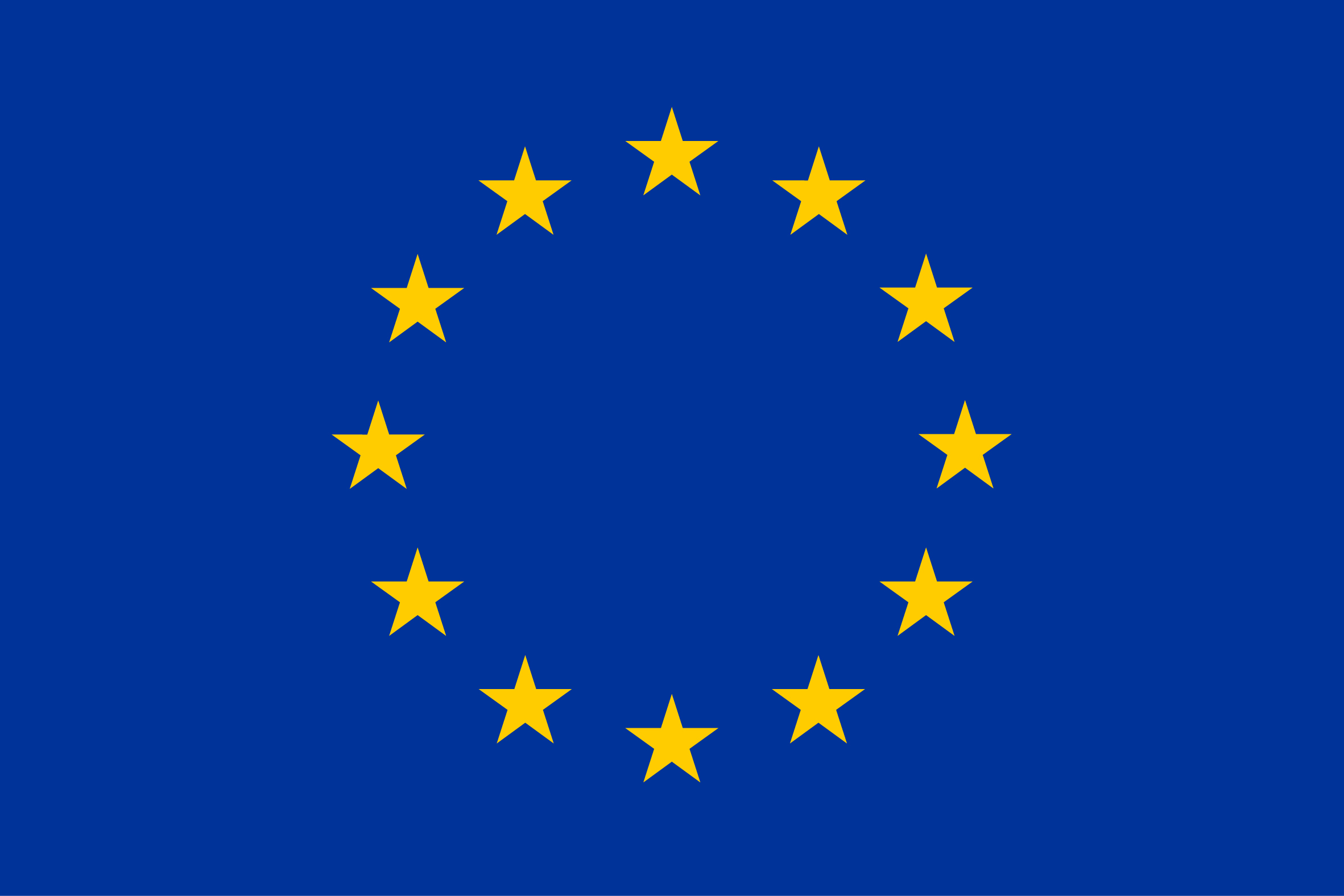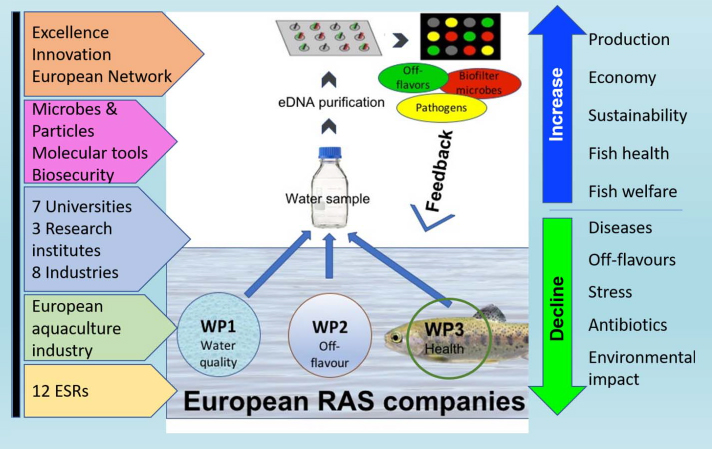About RASOPTA
Safeguarding future production of fish in aquaculture systems with water recirculation.
The primary research objectives of RASOPTA are to identify and bridge existing knowledge gaps in the production of fish species that are important to human nutrition and economy in Europe. The research objectives share a central pivot in the development of a new DNA chip designed for the RAS industry.
The objectives are studied in the following 3 work-packages (WPs):
- WP1. New technologies for upgrading of the water quality in RAS by optimizing biofilters for improved microbial and chemical water quality; quantification of the biological role of micro-particles that typically are abundant in water in RAS; and determination of the impact of microbes in the water to the fish microbiome.
- WP2. Identification of dominant off-flavours in water and fish from freshwater and marine RAS; location of hotspots and microbial ecology of the off-flavour producing microorganisms; test of conventional and new prototypes of fish feeds for content of off-flavours; and isolation of off-flavour degrading bacteria that can assist in elimination of off-flavour episodes in RAS.
- WP3. Control of the abundance of common disease-causing bacteria and parasites in fish in RAS; evaluation of fish welfare in intensive fish production systems; establishment of safe procedures for biosecurity; and design of a DNA-based chip as an early warning tool for typical health and water quality hazards in RAS.
The research will be conducted through interdisciplinary and university-industry driven research-based training. To achieve the research goals, innovative approaches within microbial ecology, molecular biology and bioinformatics will be combined with cutting-edge analytical technologies.
Overview of the research programme
The training goal of the RASOPTA training is to educate 12 ESRs in state-of-the-art technologies in RAS production to create a new generation of highly skilled young researchers within aquaculture disciplines. The research training is conducted in 3 tightly-connected work-packages (WPs) that combine academic expertise with hands-on experiences from the RAS industry within production of important aquaculture species on the European market: salmon, rainbow trout, pike-perch and sturgeon (for caviar production).
The specific objectives of the 3 WPs are translated into these tightly interrelated research themes:
- In WP1, by taking an interdisciplinary approach based on newly developed technologies, we address the complex and diverse role of bacteria in water quality. Successful fish production in RAS depends on a well-functioning biofilter for microbial conversion of toxic ammonia and on good microbial water quality to ensure non-detrimental fish-microbe interactions. However, it is unclear how biofilter and particles in the water impact the microbial water quality. In this WP, ESR1 will determine potential beneficial or harmful effects of the biofilter on microbial water quality and examine nutrient cycling; ESR2 will clarify the implications of particles on microbial activity and water quality, with particular focus on O2 consumption and CO2 production; and ESR3 will examine interactions between microbes in water (planktonic and particle-associated) and fish by microbiome analyses.
- In WP2, innovative procedures to alleviate the damaging off-flavour tainting of RAS fish will be developed after identification of biological processes leading to production of the off-flavours. Solving the off-flavour issues is a key challenge to the aquaculture industry, since consumers reject to buy fish products with an unacceptable taste and flavour. Specifically, research and training by the ESRs in this WP address these vital issues: ESR4 will use the common off-flavour compound geosmin as proxy to identify microbial hotspots for off-flavour production and isolate new, geosmin- degrading bacteria for inoculation in RAS biofilters; ESR5 will apply analytical techniques to identify varieties and concentrations of off-flavours in freshwater and marine RAS, including also adverse bromine compounds in marine RAS; ESR6 will identify to which extent biofilters contribute microbial off-flavours to fish in RAS and apply sensory-analytical characterization in consumer evaluation of the produced fish; and ESR7 will resolve the influence of different fish feeds on off-flavours in RAS water and develop new experimental feeds with alternative protein and lipid sources
- In WP3, the research training goals are to provide needed knowledge on welfare and health of fish in different types of RAS, to analyze biosecurity related to dispersal of pathogens from RAS, and to develop a novel DNA-chip for improvement of health and welfare of fish, and to indicate water quality in RAS production systems. The intense fish production in RAS increases transmission of parasitic, bacterial and viral diseases that is fatal unless they are identified at an early stage and can be eliminated. In addition, a high abundance of fine particles in RAS water can physically threaten fish health. In this WP, main research and training objectives by the ESRs focus on solving these vital issues: ESR8 will examine fish health and welfare indicators by omics and imaging technologies to pinpoint stress and immune-compromising parameters; ESR9 will identify major pathogen entry points in salmon RAS by molecular screening of air and water intake and of fish to examine vital biosecurity issues in the intensive RAS production; ESR10 will determine thresholds for infection by disease-causing bacteria by identifying pathogen infection under non-stressful and stressful conditions; ESR11 will examine presence and diversity of a typically overlooked group of common RAS pathogens, namely eukaryotic parasites, such as amoebae, in different freshwater RAS; and ESR12 will design and validate a novel DNA chip for diagnosis and early warning for fish pathogens, microbial water quality hazards and emergence of off-flavour producing microorganisms in RAS.
Barriers to present RAS production, accomplishments and impact of RASOPTA on the future RAS production are summarized in Fig. 1.

EU project

The fellowship is funded by the European Union’s Horizon 2020 research and innovation programme under the Marie Skłodowska-Curie grant agreement No 956481.

